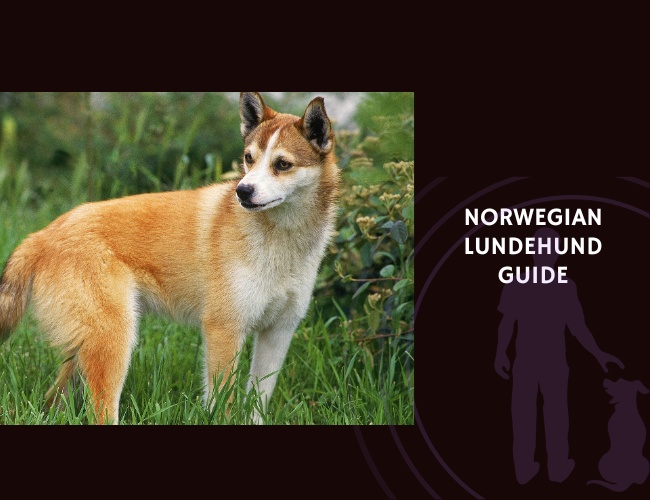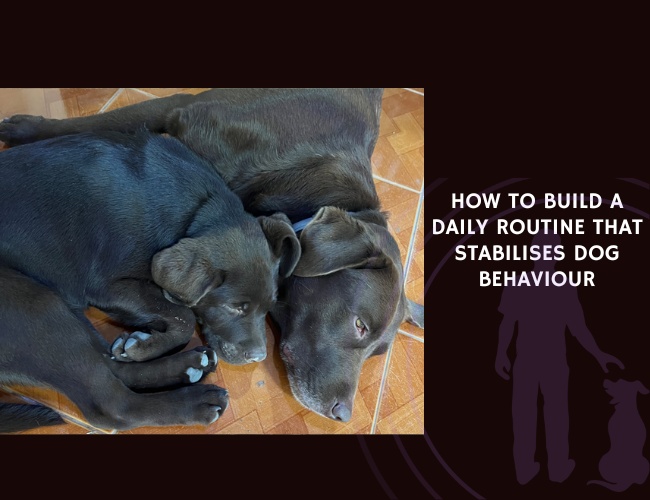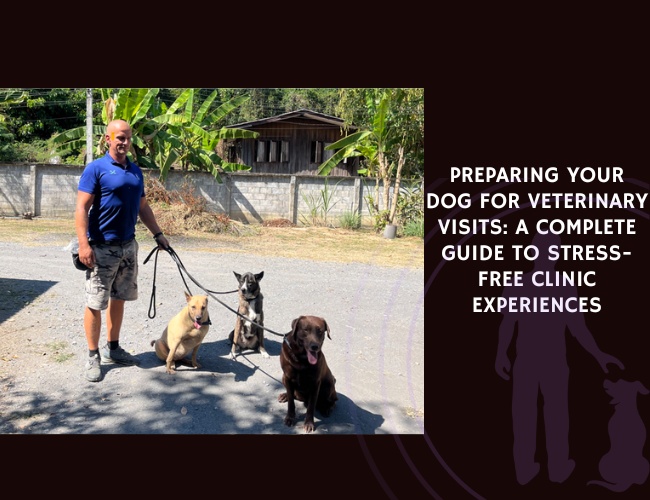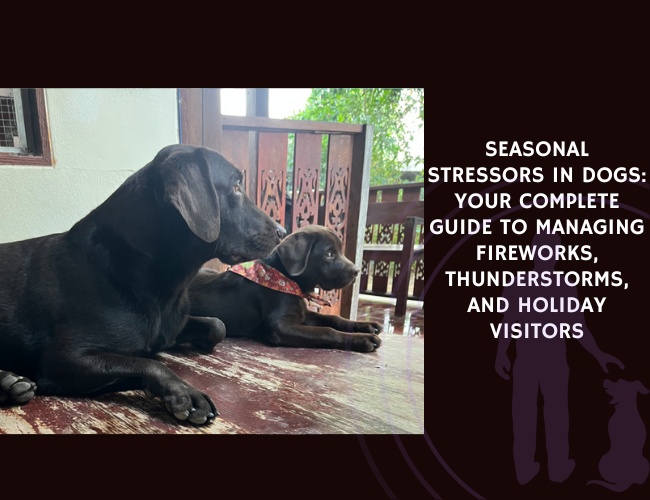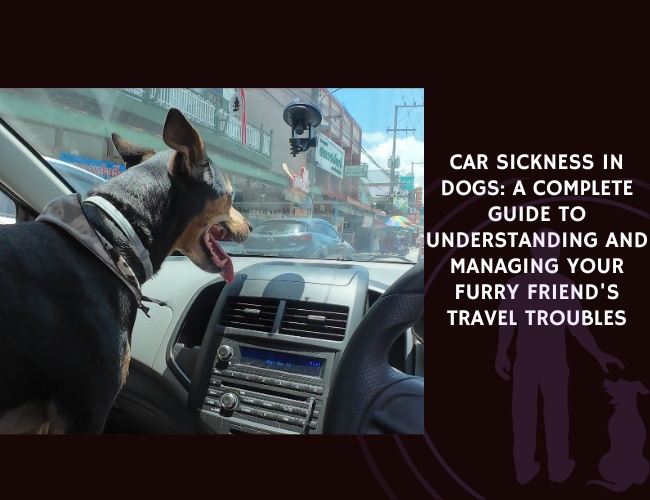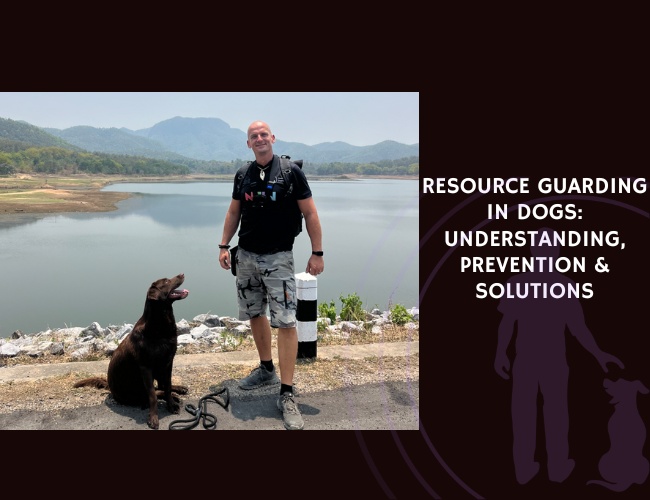When you first encounter a Norwegian Lundehund, you might notice something extraordinary about their paws – six fully functional toes where other dogs have four, each equipped with extra pads that once gripped treacherous cliff faces along Norway’s windswept coast. This remarkable breed, whose name literally translates to “puffin dog,” represents one of nature’s most specialized canine adaptations, developed over 400 years for the singular purpose of hunting puffins in seemingly impossible terrain. With their ability to close their ears against water and debris, bend their head backward to touch their spine, and splay their front legs completely flat like a lizard, these small Spitz dogs defy conventional understanding of canine anatomy. Yet beneath these fascinating physical traits lies a complex personality shaped by centuries of independent work, presenting both incredible rewards and significant challenges for modern owners. Let us guide you through the extraordinary world of the Norwegian Lundehund, where ancient hunting instincts meet contemporary companionship, and where understanding their unique needs becomes essential for a harmonious life together 🐾
Character & Behaviour: Understanding Your Lundehund’s Ancient Soul
The Puffin Hunter’s Legacy
The Norwegian Lundehund’s character cannot be understood without appreciating their remarkable historical role. For over four centuries, these dogs were the economic lifeline of Norwegian coastal communities, with individual dogs retrieving between 20 to 100 puffins per night during hunting expeditions. This specialized work shaped every aspect of their personality – from their fierce independence to their creative problem-solving abilities.
Working Heritage Traits that persist today include an exceptional ability to navigate complex environments independently. You might notice your Lundehund studying a problem from multiple angles before acting, a behavior directly linked to their cliff-climbing ancestry. Their soft-mouth retrieval instinct means they’ll often carry objects gently, though don’t expect them to bring items back on command – their ancestors worked alone, deciding for themselves when and how to deliver their quarry.
Environmental Adaptability shows in their cat-like agility and their tendency to use furniture as three-dimensional space. Your Lundehund might surprise you by climbing to impossible places or squeezing through gaps that seem far too small. This isn’t mischief – it’s the expression of centuries of cave exploration and cliff navigation encoded in their DNA.
Temperament: The Independent Thinker
Living with a Norwegian Lundehund means accepting a companion who views obedience as optional and cooperation as negotiable. Their temperament reflects what researchers call a “primitive” personality – minimal human intervention in their behavioral evolution has preserved ancient dog characteristics that can both charm and challenge modern owners.
Positive Traits emerge most strongly within their family unit. Your Lundehund will show deep loyalty and affection to their chosen people, often following family members from room to room with quiet devotion. They’re naturally alert watchdogs, using their distinctive vocal range to announce visitors or unusual events. Their playful nature manifests in acrobatic displays that showcase their remarkable flexibility – don’t be surprised to find your furry friend contorted into positions that would make a yoga instructor envious.
Challenging Aspects require understanding and patience. That natural wariness with strangers isn’t rudeness – it’s an ancient survival instinct that helped their ancestors work independently in dangerous terrain. Their sensitivity to harsh treatment means traditional dominance-based training will backfire spectacularly. You might notice they seem to actively enjoy outsmarting their humans, finding creative ways around rules rather than following them directly.
Cognitive Abilities: Problem-Solving Masters
The Lundehund’s intelligence manifests differently than in breeds selected for obedience. Their cognitive style resembles that of independent working breeds, with some researchers comparing their problem-solving approach to that of cats rather than typical dogs.
Learning Patterns in Lundehunds follow a unique trajectory. They’re quick to understand concepts but selective about compliance – your Lundehund might learn a command in three repetitions but choose to perform it only when they see personal benefit. This isn’t stupidity or stubbornness in the traditional sense; it’s a sophisticated cost-benefit analysis that served them well when working alone on dangerous cliffs.
Memory and Manipulation abilities can astound owners. Once a Lundehund learns something – whether it’s how to open a particular gate or where you hide the special treats – they remember permanently. Many owners report their dogs seem to catalog human behavior patterns, learning to manipulate situations to their advantage. You might find your Lundehund has trained you without you realizing it! 🧠
Prey Drive and Play Behaviors
The hunting instincts that made Lundehunds invaluable puffin hunters create specific behavioral patterns in modern homes that owners must understand and manage.
Prey Drive Manifestations appear in their distinctive pouncing behavior – more feline than canine in execution. Your Lundehund might stalk toys or even shadows with intense concentration before launching into spectacular aerial attacks. This drive extends particularly to birds and small animals, making them potentially problematic with pet birds or pocket pets. The sight of birds in flight can trigger an almost trance-like focus that overrides trained responses.
Play Preferences reflect their working heritage. Hide-and-seek games tap into their cave-exploration instincts, while puzzle toys engage their problem-solving nature. You’ll notice play sessions tend toward short, intense bursts rather than sustained activity – mimicking the work pattern of quick hunts followed by rest periods. Self-directed play is common; many Lundehunds create their own games, hiding toys to “discover” later.
Training & Education: Working with Independent Genius
Early Socialization: The Critical Foundation
The narrow window between 3 and 14 weeks determines much of your Lundehund’s future confidence and adaptability. Without extensive early socialization, these naturally wary dogs can develop debilitating shyness or fear-based behaviors that persist throughout life.
Essential Exposures during the critical period must be comprehensive and positive. Your puppy needs to meet diverse people – different ages, ethnicities, and energy levels – in controlled, positive circumstances. Urban sounds like traffic, construction, and crowds require gradual introduction. Other dogs, particularly well-socialized adults who can model appropriate behavior, help prevent the development of fear or aggression. Handling exercises that simulate grooming and veterinary care build tolerance for necessary interventions.
Ongoing Socialization doesn’t end at 14 weeks. Throughout their first year, continue introducing new experiences while reinforcing positive associations with previously encountered stimuli. The Lundehund’s tendency toward neophobia (fear of new things) means that gaps in socialization can result in adult dogs who struggle with environmental changes. Regular “field trips” to different environments help maintain flexibility and confidence.
Training Philosophy: Motivation Over Domination
Traditional obedience training often fails spectacularly with Lundehunds. Their independent nature and sensitivity require a completely different approach – one that makes them partners rather than subordinates.
Positive Reinforcement Only isn’t just recommended – it’s essential. Harsh corrections or dominance-based methods will destroy the trust necessary for any cooperation. Your Lundehund needs to believe that working with you benefits them directly. High-value rewards (think freeze-dried liver or play sessions, not just kibble) make training worthwhile from their perspective.
Short Sessions with Variety prevent boredom and frustration. Five to ten minutes of focused training yields better results than hour-long drills. Rotate between different exercises within sessions, and change training locations regularly. The goal is to make training feel like an exciting game rather than tedious work. Many successful Lundehund trainers report making training seem like the dog’s idea produces the best results.
The Housebreaking Challenge
Let’s address the elephant in the room: many Norwegian Lundehunds never achieve 100% housebreaking reliability. This isn’t a failure of training but a breed characteristic that potential owners must understand and accept.
Understanding the Difficulty helps manage expectations. The same independence that allowed Lundehunds to work alone for hours makes them less motivated by human approval for elimination choices. Some experts theorize that centuries of living in primitive conditions with less emphasis on house cleanliness created less selection pressure for this trait.
Management Strategies focus on harm reduction rather than perfection. Installing a doggy door can be life-changing, allowing your Lundehund to self-regulate. Maintaining strict schedules, using enzymatic cleaners religiously, and accepting that accidents may occur throughout their life helps preserve your sanity. Some owners report success with indoor grass patches or litter boxes as compromise solutions. Belly bands for males can prevent marking damage while you work on the behavior.

Recall Training: The Ultimate Challenge
Achieving reliable recall with a Lundehund requires accepting that “reliable” might mean 80% compliance rather than 100%. Their prey drive and independence make off-leash freedom a calculated risk.
Building Foundation Recall starts in completely enclosed spaces with minimal distractions. Use a unique word or sound reserved only for emergency recall, paired with the absolute highest value reward you can offer. Practice in gradually more distracting environments, but always with a long line for safety. The “Predation Substitute Training” method, which redirects hunting sequences into trained behaviors, shows promise with some individuals.
Management Over Expectation means accepting that your Lundehund may never be a dog park regular or off-leash hiking companion. Long lines (30-50 feet) provide freedom while maintaining safety. GPS trackers offer peace of mind for those with escape artists. Some owners find that recall improves with age as prey drive diminishes, but never assume complete reliability.
Nutritional Recommendations: Feeding Your Sensitive Lundehund
Understanding Lundehund Syndrome’s Dietary Impact
The specter of Lundehund Syndrome (intestinal lymphangiectasia) looms over every nutritional decision. With 30% of premature deaths attributed to this condition, dietary management becomes not just important but potentially life-saving.
Disease Mechanism and Diet interact in complex ways. Lundehund Syndrome causes intestinal damage that impairs nutrient absorption, particularly fats and proteins. This creates a vicious cycle where malnutrition worsens intestinal health, which further reduces absorption capacity. Your dietary choices can either exacerbate or help manage this cycle.
Ultra-Low Fat Requirements mean that less than 20% of your Lundehund’s calories should come from fat – far lower than typical dog food formulations. This often requires specially formulated prescription diets or careful home cooking under veterinary supervision. Reading labels becomes crucial; even “low-fat” commercial foods may exceed safe levels for affected dogs.
Protein Selection and Management
Choosing appropriate proteins for your Lundehund requires balancing nutritional needs with digestive sensitivity.
Highly Digestible Sources reduce intestinal workload while providing essential amino acids. Lean proteins like skinless chicken breast, turkey, and white fish (cod, halibut) offer excellent bioavailability. Novel proteins such as venison, duck, or rabbit may benefit dogs with food sensitivities. Some severely affected dogs require hydrolyzed protein diets where proteins are pre-broken into smaller, more digestible components.
Protein Quality Indicators help you evaluate options. Single-source proteins reduce variables when troubleshooting digestive issues. Human-grade ingredients, while more expensive, often provide better quality control. Avoid by-products, fillers, and unnamed “meat meals” that can vary in digestibility and trigger sensitivities.
Supplementation Strategy
Most Lundehunds require lifelong supplementation to compensate for impaired absorption.
Essential Supplements address specific deficiencies common in the breed. Cobalamin (B12) injections may be necessary as oral supplementation often fails due to absorption issues. Fat-soluble vitamins (A, D, E, K) require careful monitoring and supplementation since low-fat diets may not provide adequate amounts. Probiotics support gut health, while digestive enzymes can improve nutrient breakdown before absorption.
Medium-Chain Triglycerides (MCTs) offer an alternative energy source that’s absorbed differently than regular fats. These can help maintain weight and energy in dogs struggling with fat malabsorption. Start with small amounts and increase gradually to avoid digestive upset.
Feeding Management Techniques
How you feed matters as much as what you feed for Lundehunds with sensitive digestion.
Small, Frequent Meals reduce intestinal burden and improve absorption efficiency. Three to four meals daily works better than traditional twice-daily feeding. Consistent timing helps regulate digestive function and makes monitoring easier. Some owners find that slightly warming food improves acceptance and digestion.
Monitoring and Adjustment requires vigilance. Weekly weigh-ins catch weight loss early. Body condition scoring helps differentiate between fat loss and muscle wasting. Stool quality provides immediate feedback on digestive function. Keep detailed food diaries to identify triggers for digestive episodes 📊
Extraordinary. Agile. Ancient.
Shaped by cliffs and puffins. The Norwegian Lundehund’s six toes, foldable ears, and spine-bending flexibility speak of a past where survival meant scaling sheer rock faces for puffins. Every quirk of their anatomy tells the story of coastal Norway’s lifeline hunters.
Independent by design. Centuries of solitary work bred problem-solving minds rather than obedient followers. They study, calculate, and act on their own terms—true echoes of their puffin-hunting ancestry.
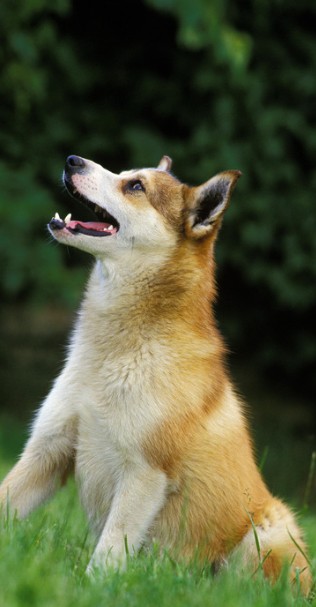
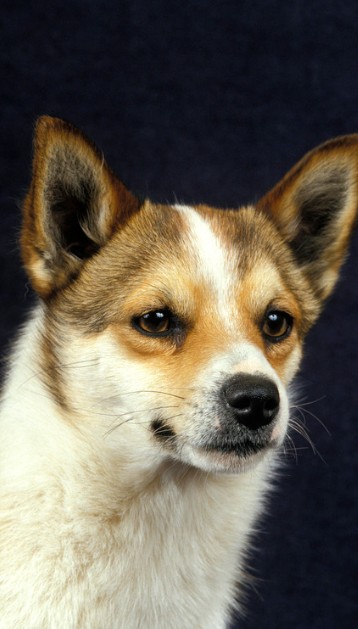
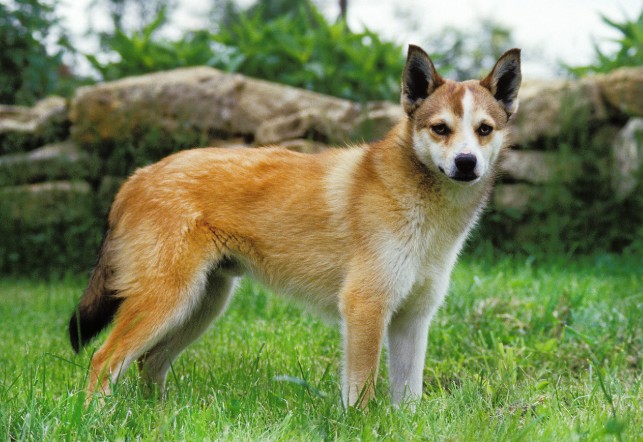
Primitive yet devoted. Obedience is negotiable, but their bond is real. With patience, respect, and understanding, a Lundehund becomes less a pet and more a fascinating partner—living proof of nature’s remarkable ingenuity.
Health Concerns: Managing Genetic Challenges
The Lundehund Syndrome Reality
Every Lundehund owner must understand and prepare for the possibility of this devastating condition. Knowledge and preparation can mean the difference between management and crisis.
Clinical Progression varies significantly between individuals. Some dogs experience mild, intermittent symptoms manageable with diet alone. Others face severe, life-threatening episodes requiring intensive veterinary intervention. Early signs include intermittent diarrhea, gradually progressing to chronic diarrhea, vomiting, and weight loss despite good appetite. Advanced cases develop ascites (fluid accumulation in the abdomen) and potentially fatal protein loss.
Management Protocols require lifelong commitment. Dietary management forms the foundation, but many dogs also need pharmaceutical intervention. Prednisone or other corticosteroids help control inflammation but carry their own side effects requiring monitoring. Regular blood work tracks protein levels, vitamin status, and organ function. Some owners maintain “emergency kits” with medications and supplies for acute episodes.
Genetic Bottleneck Consequences
The near-extinction and subsequent recovery of the breed created one of the most severe genetic bottlenecks in purebred dogs.
Inbreeding Depression Effects manifest in multiple ways. The average Lundehund has an inbreeding coefficient exceeding 0.25 – equivalent to full sibling matings. This reduces immune system effectiveness, fertility, and overall vigor. Litter sizes average only 2-3 puppies, with high puppy mortality rates. Some lines show increased susceptibility to autoimmune conditions beyond Lundehund Syndrome.
Cross-Breeding Project offers hope for the breed’s future. The Norwegian Lundehund Club initiated a careful outcrossing program using Nordic breeds like the Norrbottenspets and Icelandic Sheepdog. These crosses aim to increase genetic diversity while maintaining breed characteristics. Puppies from these programs are carefully tracked and selectively bred to gradually improve the breed’s genetic health.
Orthopedic Considerations
Despite their remarkable flexibility, Lundehunds face several orthopedic concerns requiring attention.
Patellar Luxation occurs more frequently than in many breeds, possibly related to their unique leg structure. Grades vary from mild (occasional slipping) to severe (permanent dislocation requiring surgery). Regular veterinary assessment helps catch problems early. Maintaining appropriate weight reduces stress on joints.
Hypermobility Concerns arise from the same flexibility that allows their amazing contortions. Some individuals develop joint problems from overextension or repetitive stress. Low-impact exercise like swimming provides fitness without joint stress. Supplements like glucosamine and chondroitin may provide protective benefits.
Preventive Health Management
Proactive health management can significantly impact your Lundehund’s quality and length of life.
Regular Monitoring Schedule should include annual blood panels checking organ function, protein levels, and vitamin status. Bi-annual fecal examinations screen for parasites that could worsen digestive issues. Annual eye examinations by veterinary ophthalmologists catch developing problems. Dental care prevents secondary health issues from oral bacteria.
Emergency Preparedness is crucial given the breed’s health challenges. Maintain relationships with both regular and emergency veterinarians familiar with the breed. Keep detailed health records accessible for emergency situations. Some owners maintain IV fluids and medications at home under veterinary guidance for managing acute episodes.
Lifestyle & Environment: Creating the Perfect Lundehund Life
Exercise Requirements: Balancing Activity and Ability
Your Lundehund needs both physical exercise and mental stimulation, but their unique physiology and health concerns require thoughtful activity planning.
Daily Physical Needs typically include 30-60 minutes of activity divided into multiple sessions. Two to three walks plus play sessions suit most adults. Their burst-style energy means they prefer short, intense activities over long endurance exercises. Secure, fenced areas become essential given their unreliable recall and escape artist tendencies.
Mental Stimulation Importance cannot be overstated for these intelligent dogs. Puzzle toys that dispense treats engage their problem-solving nature. Scent work games tap into natural hunting instincts safely. Environmental enrichment like rotating toys, creating “hunting” games with hidden treats, or setting up climbing obstacles prevents boredom-related behaviors. Many owners report that mental exercise tires their Lundehund more effectively than physical activity alone 🧠
Ideal Living Situations
While adaptable, Lundehunds thrive best in specific environments that accommodate their unique needs.
Rural or Suburban Settings offer ideal conditions for most Lundehunds. Securely fenced yards provide safe exploration space and help manage housebreaking challenges. Room to roam reduces frustration from their independent nature. Natural environments offer varied sensory experiences that engage their hunting heritage. Fewer strangers passing by reduces stress for these naturally wary dogs.
Urban and Apartment Considerations require extra management but remain possible. Success depends on dedicated exercise routines and creative solutions for housebreaking. Noise considerations become important given their tendency to bark. Some urban Lundehunds benefit from doggy daycare for exercise and socialization. Balcony potty areas or nearby green spaces become essential. The mental stimulation of city life can actually benefit well-socialized individuals.
Climate and Seasonal Considerations
The Lundehund’s Norwegian heritage creates specific climate preferences affecting their comfort and health.
Cold Weather Excellence reflects their Arctic origins. Their dense double coat provides superb insulation. Many Lundehunds become notably more energetic in cold weather. Snow seems to trigger playful behaviors and increased activity. Winter often represents their happiest, most comfortable season. Some owners report fewer digestive issues during colder months.
Heat Management Challenges require careful attention in warm climates. Their thick coat makes them prone to overheating. Exercise timing shifts to early morning and evening. Air conditioning becomes necessary rather than optional. Some owners use cooling vests or mats during summer. Always provide abundant fresh water and shade options. Watch for signs of heat stress like excessive panting or lethargy 🌡️
Family Integration Dynamics
Successfully integrating a Lundehund into family life requires understanding their social preferences and limitations.
Compatibility with Children depends heavily on socialization and child behavior. Older, respectful children often form wonderful bonds with Lundehunds. The breed’s playful nature can delight kids who understand boundaries. However, their sensitivity means rough handling triggers defensive responses. Toddlers’ unpredictable movements may cause stress or fear. Always supervise interactions and teach children appropriate interaction methods.
Multi-Pet Households work best with careful introductions and species considerations. Other dogs, especially Spitz breeds, often become beloved companions. Some Lundehunds seem to prefer their own kind, forming special bonds with other Lundehunds. Their high prey drive makes birds and small mammals risky companions. Cat compatibility varies individually but improves with early exposure. Always provide separate spaces for each pet’s security.
Creating an Enriching Environment
Your home environment significantly impacts your Lundehund’s wellbeing and behavior.
Physical Space Modifications accommodate their unique needs and abilities. Installing doggy doors can revolutionize housebreaking management. Creating vertical spaces like shelving or platforms appeals to their climbing instincts. Puzzle feeders and treat-dispensing toys provide solo entertainment. Secure storage becomes essential for these clever escape artists. Some owners create dedicated “dig boxes” or hunting simulation areas.
Routine and Predictability help manage their sensitive nature. Consistent feeding, exercise, and sleep schedules reduce anxiety. Predictable patterns help with housebreaking efforts. Regular training sessions, even brief ones, provide mental structure. Gradual introduction of any changes prevents stress responses. Many Lundehunds thrive with ritual and routine marking their days.
The Senior Lundehund: Aging Gracefully
Adjusting Care for Golden Years
As your Lundehund ages, their care requirements shift to accommodate changing physical and mental needs.
Physical Changes typically begin around age 8-10. Decreased activity levels require adjusted exercise routines. Joint stiffness from lifetime of unique movements may develop. Digestive sensitivity often increases with age. Vision and hearing changes affect their environmental awareness. Weight management becomes crucial for joint health.
Cognitive Considerations in aging Lundehunds include potential for canine cognitive dysfunction. Maintaining mental stimulation helps preserve cognitive function. Familiar routines become even more important for comfort. Some seniors develop increased anxiety or confusion. Patience and understanding help navigate these changes together 🧡
Quality of Life Decisions
The breed’s health challenges make quality of life assessments particularly important.
Monitoring Wellbeing requires honest evaluation of daily life. Track good days versus bad days for perspective. Note changes in appetite, activity, and social interaction. Pain indicators like reluctance to move need addressing. Enjoyment of favorite activities provides important feedback. Regular veterinary consultations guide decision-making.
End-of-Life Considerations deserve thoughtful preparation. Lundehund Syndrome can create crisis situations requiring quick decisions. Discussing preferences with family prevents emotional decisions. Some owners maintain quality of life scales for objective assessment. Home euthanasia may reduce stress for sensitive dogs. Grief support helps process loss of these unique companions.
Making the Decision: Is a Norwegian Lundehund Right for You?
The Ideal Lundehund Owner Profile
Success with this breed requires specific qualities and circumstances that not every dog lover possesses.
Essential Characteristics include patience beyond what most breeds require. Experience with primitive or independent breeds provides helpful perspective. Financial preparedness for potentially significant medical expenses is crucial. Flexibility to adapt to the dog’s unique personality matters more than training goals. Time availability for exercise, training, and health management cannot be compromised. Appreciation for the breed’s history and uniqueness should outweigh desire for obedience.
Lifestyle Alignment determines long-term success. Active people who enjoy outdoor adventures suit the breed’s energy. Structured routines accommodate their need for predictability. Home ownership with secure fencing simplifies management. Work-from-home or flexible schedules help with their social needs. Understanding family members prevent relationship stress over training challenges.
The Rewards of Lundehund Life
For the right owner, these challenges transform into deeply rewarding experiences.
Unique Joys include witnessing their acrobatic abilities daily. Their clever problem-solving provides endless entertainment. The deep bond formed with these sensitive souls is irreplaceable. Being guardian to living history carries special meaning. Their quirky personalities bring constant surprises and delight. The Lundehund community offers support and friendship worldwide.
Personal Growth often accompanies Lundehund ownership. Patience develops through training challenges. Creativity flourishes finding management solutions. Acceptance of imperfection brings unexpected freedom. Understanding of canine behavior deepens significantly. Connection to Norwegian culture and history enriches life experience.
Conclusion: Embracing the Extraordinary
The Norwegian Lundehund stands as one of the canine world’s most remarkable achievements – a dog so specialized that it defies conventional understanding of what dogs can be and do. With their six-toed feet gripping your heart as surely as they once gripped cliff faces, these puffin hunters bring both incredible joy and significant challenges to modern homes. Their unique physical abilities, from closing their ears to bending impossibly backward, mirror the flexibility required of their human companions in adapting to life with such an extraordinary breed.
The health challenges, particularly the prevalence of Lundehund Syndrome, demand that potential owners approach this breed with eyes wide open and hearts prepared for possible heartbreak. Yet those who accept these challenges find themselves custodians of living history, partners to dogs whose intelligence and independence create relationships unlike any other. The frustrations of housebreaking failures and unreliable recall fade against the backdrop of their acrobatic play, their clever solutions to daily problems, and their deep, quiet devotion to their chosen people.
For those with the patience, experience, and dedication to meet their needs, Norwegian Lundehunds offer a window into the ancient partnership between humans and dogs, before breeding created companions who live to please us. They remind us that dogs can be partners rather than servants, thinkers rather than followers, individuals rather than stereotypes. In choosing to share your life with a Lundehund, you’re not just getting a pet – you’re becoming part of a centuries-old story of survival, adaptation, and the enduring bond between humans and one of nature’s most remarkable canine creations 🐾
The future of this ancient breed rests in the hands of dedicated owners and breeders working to preserve their unique characteristics while improving their genetic health. Whether you become part of this mission or simply admire these remarkable dogs from afar, the Norwegian Lundehund stands as testament to the incredible diversity and adaptability of our canine companions. In a world of designer dogs and extreme breeding, they remind us of what dogs can become when nature and necessity, rather than human whims, guide their development.

